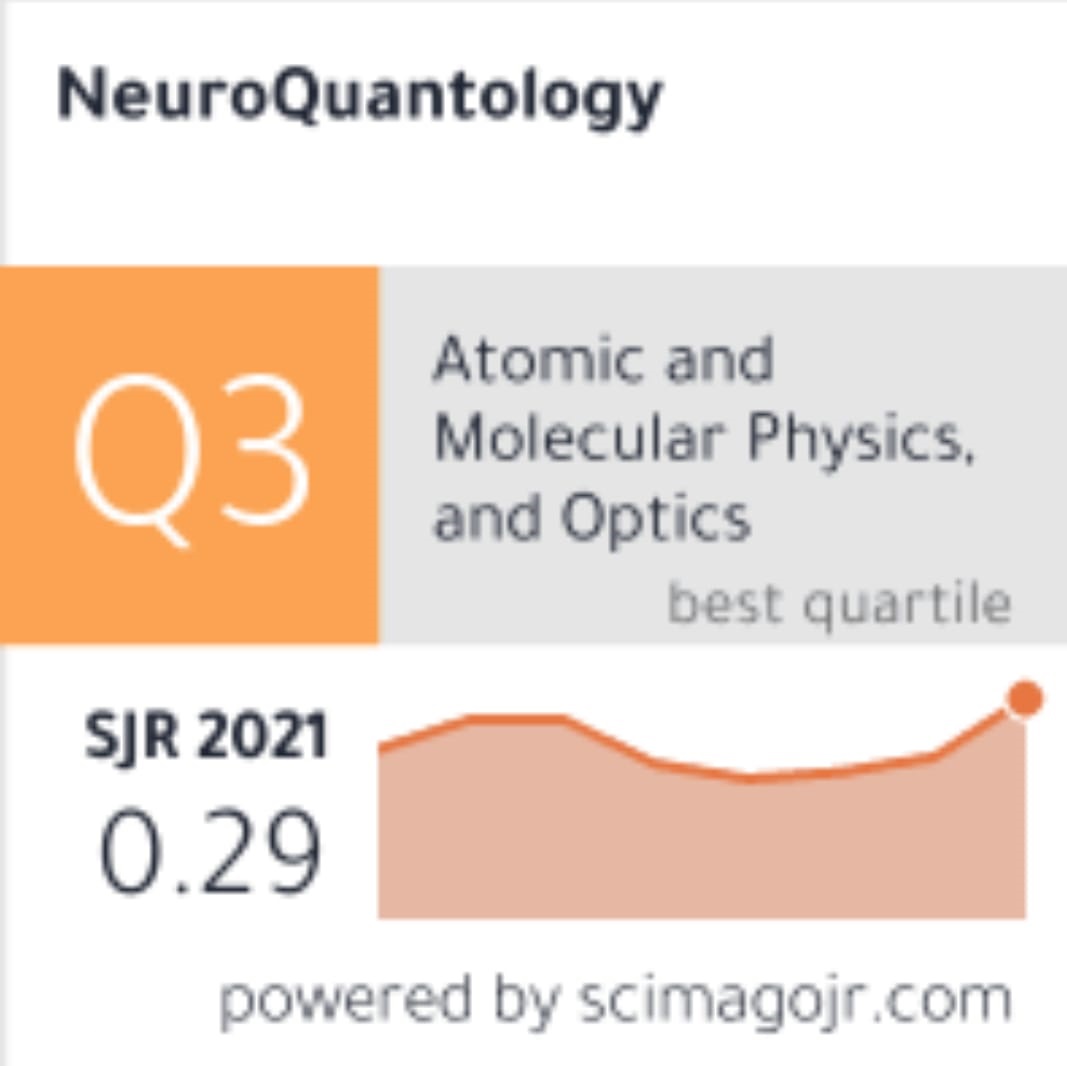


Introduction
NeuroQuantology (ISSN 1303-5150) is a journal dedicated to supporting the interdisciplinary exploration of the nature of quantum physics and its relation to the nervous system. Interdisciplinary discussions are particularly encouraged. Contributions must be only English.
Indexing and Abstracting
NeuroQuantology Indexed by the following major indexing services:
-----------------------------------------------------
:: Cabell's Directory
:: ProQuest
:: CiteFactor
:: CrossRef
:: SCOPUS
:: EMBASE
:: EBSCO Publishing
:: DOAJ
:: Index Copernicus
:: This journal utilizes the LOCKSS system.
:: GALE CENGAGE Learning
Types of contribution
NeuroQuantology is committed to offering readers a stimulating mixture of reviews, original articles, short communications, perspectives and tutorials. Reviews, written by leading experts, summarize the important results of recent research within the journal scope. The journal highlights joint contributions by neuroscientist and physicists and fosters interdisciplinary research.
Review articles
Review articles should be complete, critical evaluations of the existing state of knowledge in a particular topic or area within the scope of the journal. Rather than a 'collage' of detailed information with a complete literature survey, a critically selected treatment of the material is desired; unsolved problems and possible developments should also be discussed. The introduction of a review article should primarily introduce the non-specialist to the subject as clearly as possible. A review should conclude with a section entitled 'Summary and outlook' in which the achievements of and new challenges for the subject are outlined succinctly. Length: a review article manuscript should consist of a maximum of 30 pages of text, footnotes, literature citations, tables and legend; there should be no more than 30 references.
Articles (original research papers)
Articles should be comprehensive, fully documented reports of original research. They should be concise but with complete results and conclusions. Authors are encouraged to take advantage of the Web features available (including 3D animations, video and sound). Manuscripts should be divided into the following sections, each beginning on a new page: Title page, Abstract, Introduction, Materials and methods, Results and discussion, Conclusion and outlook, Acknowledgments, Abbreviations list, References.
